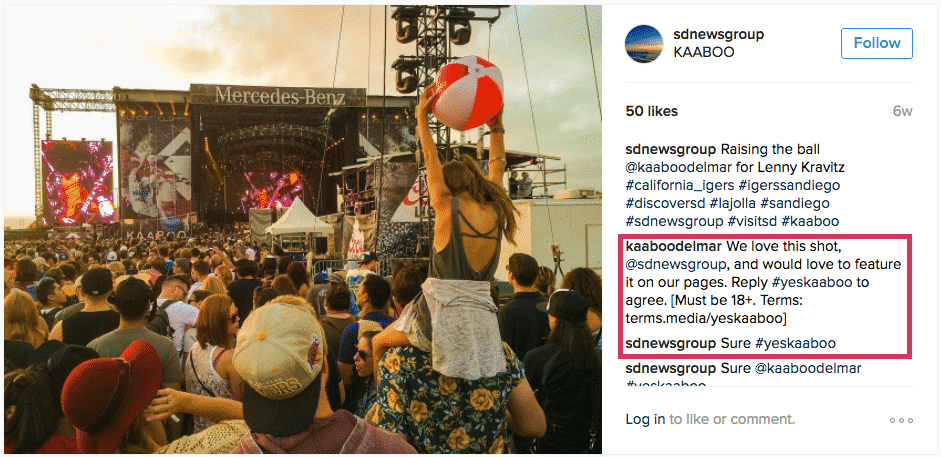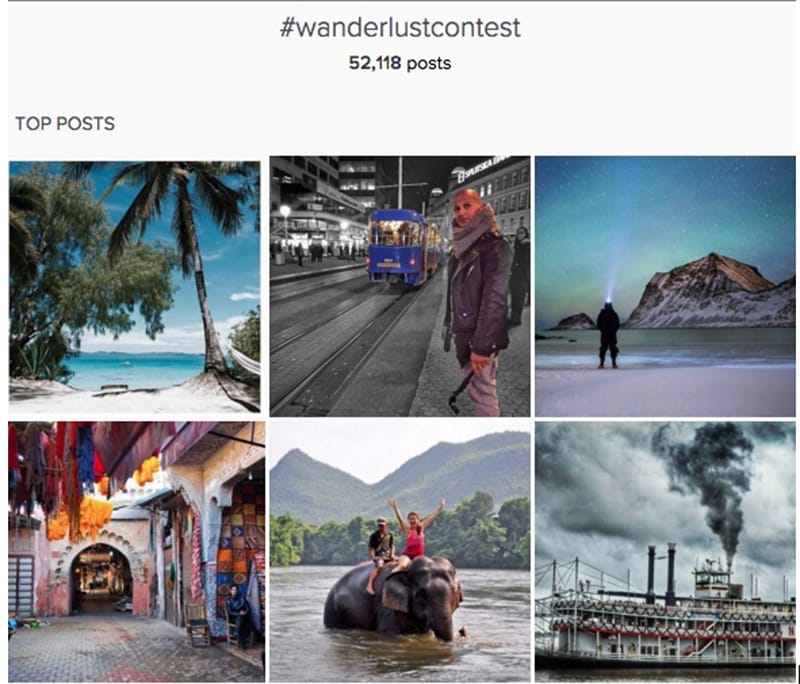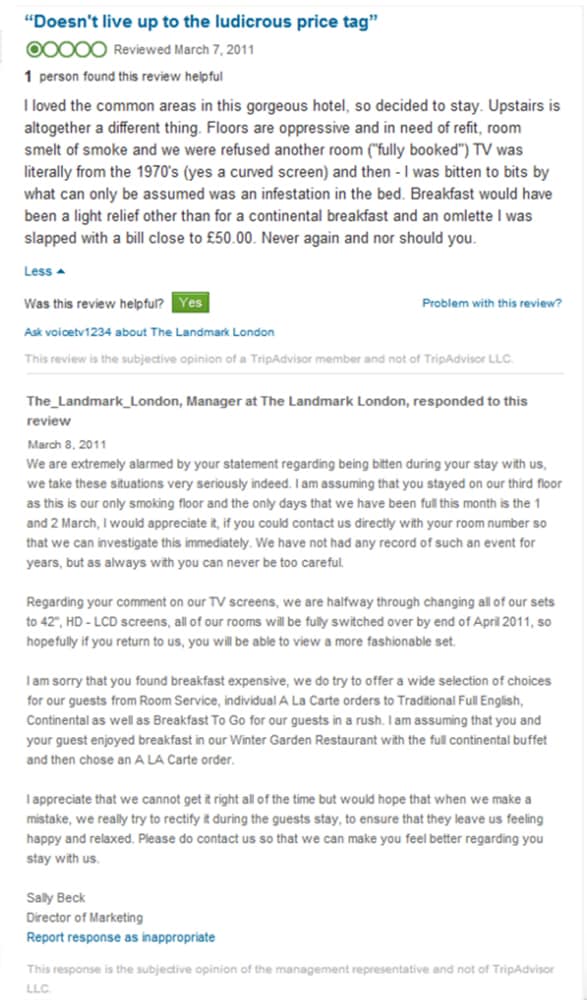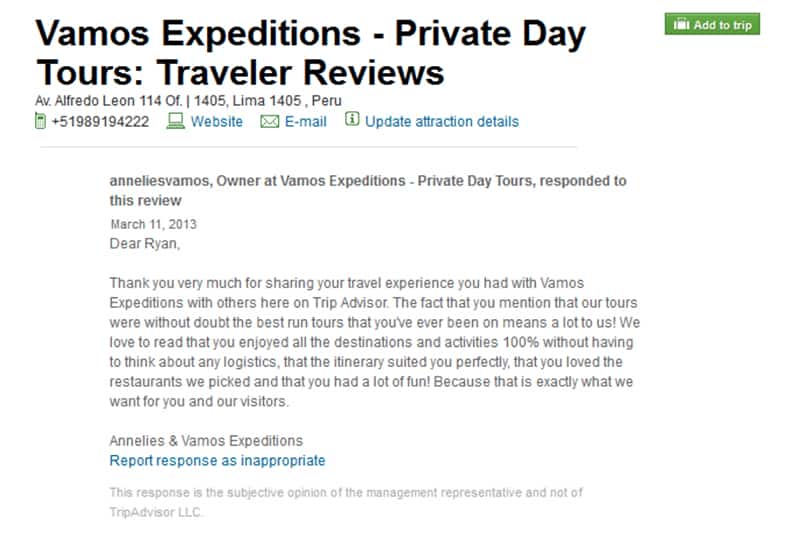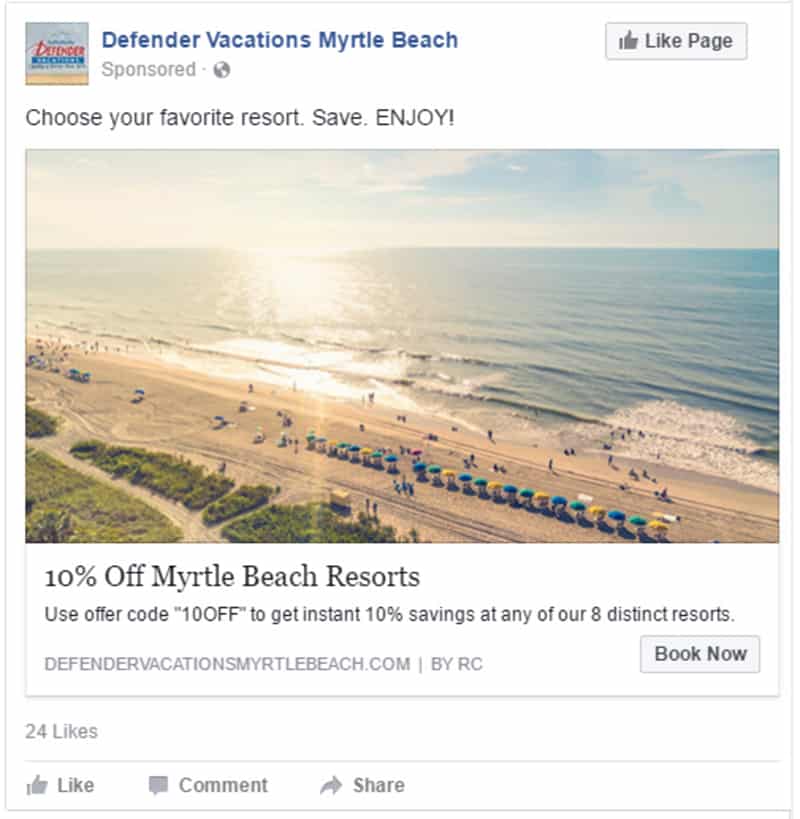The need for content marketing in the hospitality industry has increased astronomically. Over the past few years the once comfortable resort industry has been shaken to its core by the introduction and rapid popularity of sharing-industry platforms such as HomeAway and Airbnb, where individuals can now list their personal properties and rooms for rent.
As these platforms have gained mainstream notoriety the competition resorts face has more than doubled, faster than any amount of traditional resort accommodations could have ever been designed and built. A report commissioned by the Hotel Association of New York City found that between September 2014 and August 2015 there were 480,000 hotel nights reserved compared to 2.8 million nights booked on Airbnb throughout the city. This is just a single city snapshot of how dramatically things have changed for the hotel and resort industry.
Content marketing is a great tool for you to generate and grow revenue to a resort. Without proper content marketing a resort risks falling into a blackhole where discovery by potential guests is difficult. Effective content marketing of a resort has the ability to help potential guests discover a new resort. Once guests discover your resort online, your content has the potential to inspire and educate them which increases the likelihood they’ll spend their precious vacation at your property. The ways in which people discover resorts is constantly changing. Google has just introduced a new app, Google Trips, which will depend heavily on organic content to help people find what they are looking for in a resort. Content marketing will always benefit your resort, no matter how the tools change as long as the content is still relevant and helpful.
Clear content marketing for resorts is also an effective way to drive direct bookings which, as competition rises, has become more important than ever. Especially if you are marketing a small resort that falls outside of a major chain such as Wyndham and Starwood.
Why is it important? Money, of course!
Third party sites such as Expedia take 20-25% of the total reservation. That makes a big impact in your resort’s revenue. Many people book through these platforms because they get rewards points and they trust these large sites. Large companies such as Wyndham have the ability to offer frequent traveler rewards to generate customer loyalty bookings. But, what about those smaller groups or single properties who need people to make reservations without loyalty points or high commissions to third parties? How do you get reservations?
Well, content marketing of course!
Setting a strategy
The first step to successful content marketing for resorts is setting a strategy. Without a clear, goal-oriented strategy, you are just blindly producing content with no point. When you develop a strategy all content serves a purpose, can easily be repurposed across multiple platforms and has a longer lifespan with better results.
To set a strategy, you need to define both goals and target audiences. Knowing the type of travelers that your resort is best suited for will help you create a content strategy that sticks.
For example, the content strategy for a hotel geared towards business travelers with few amenities, but a convenient location will be drastically different from an all-inclusive vacation resort geared towards couples or one perfect for families or an eco-lodge perfect for minimalists and adventurers.
Once you define your main target audiences, they should be broken down further to examine the personas. One of the first things to define is their where they live. Knowing where travelers primarily come from can help you target specific locations that have affordable flight patterns, drivability and a history of traveling to the location. Knowing their geographic location can also help you determine which pain points to include in the content that you produce such as avoiding harsh winters or humid summers.
Continue to dig into what each audience’s passions, interests and age range is so that when you craft your content it becomes more specific and relatable to potential guests.
As far as the specific content strategy it is important that all content lead to either the resort’s social profiles or the resort’s website. To optimize keywords it’s important to have all the content point to one place and most importantly, if the resort wants to net the most money for each reservation it needs the reservations to be direct. Without direct reservations, you resort will be paying third party sites high commission fees.
Once the target audiences are defined the pathway toward the ultimate goal will be more clear and inspired. The ultimate goal of any content marketing strategy should not just be to attract visitors. It should be to attract the RIGHT visitors. Calling a property luxurious, when it is quaint might get a few initial bookings, but the aftermath of the negative reviews and ruined vacation will harm the resort in the long run. When in reality, there are travelers out there seeking quaint accommodations.
So, properly defining what the property is and who it is perfect for is the backbone of a successful content strategy.
Generating ideas
Generating ideas for a content marketing strategy should begin with two things:
- Defining where your content will be published
- Creating core imaging and messages
By beginning with these two things, the content that you create will be perfect for the platform it is published on yet have a consistent message and branding across every platform. Setting these up from the beginning will not only give your messaging consistency, but it will also make it much simpler to reformat and repurpose content.
Some ways to begin generating ideas include:
- Create photo boards for inspiration. When marketing a resort, photos should reflect multiple things such as the actual rooms, the resort, and local landscape and attractions.
- Lists of reasons to visit the resort including the positives, activities and pain points of things people are escaping such as harsh winters.
- Maintain a database of travel quotes. People love quotes, especially ones that inspire them to get away. Posting a travel quote on a photo is a great way to fill social media space and be continuously active.
- Scan reviews to find out everything people love about the resort and any pain points that the resort needs to address.
Producing content
Once you’ve got a strategy, photo galleries and core messages it’s time for the fun to begin – actually producing the content!
Website
The cornerstone of a good content marketing strategy for a resort will focus on being present on as many platforms as possible, from social media sites to a wide variety of online travel agents (Expedia, Booking.com, etc). It’s important to be on these online travel agent sites to get found, since a majority of travelers visit them in the first stage of research. If you have a solid, converting website it will encourage people who find your resort to book directly.
The most important piece of content you can produce is your own website. Your resort’s site is a home for all content, links to social profiles and more, but most importantly it is a trusted place where potential visitors feel safe,secure and motivated to book their vacation.
It’s important to make sure your website has adequate information to answer all traveler’s questions, such as how many people each room type sleeps, property amenities and photos of the units and property. It must also be mobile friendly. A 2015 TripAdvisor study found that 42% of travelers use smartphone to plan or book their trips. This number will continue to increase year over year, so it is important that visitors be able to navigate your website and make reservations on it easily with any device.
One of the best ways to convert visitors on a resort website instead of an online travel agent site is to give them incentive to do so. From a special discount to upgrades, you should find a happy medium where something can be given and displayed to guests while they are in the research phase. Effective offers make guests feel as though they need to book direct to get the best stay for their money.
Blogs
Content marketing for resorts should also include blog posts on the resort website. With these posts you can detail special perks of the resort and also area attractions.
Sit with the front desk and go over every single question they ever get from guests, from what to do to tips about the area or questions about the resort. Take all of these questions and craft blog posts around them. It will showcase the knowledge and helpfulness your resort offers in addition to packing your website with keywords and raising your search engine visibility.
One of the best types of blog posts a resort can have is lists. People love easy to scan and digest lists. List topics can include top amenities at the resort, top local attractions and four different posts about the best reasons to visit the resort in each specific season.
If your resort has properties in multiple locations there’s a huge increase in the variety of content to be written. For example, SPM Resorts makes lists of things that it’s various locations have in common such as coastal foodie towns, like in this blog post.
Photos
Photos are the strongest piece of content that your resort can use. Potential guests doing research should be able to find a plethora of property photos, which should be professionally taken on the website and then you should offer some casual, realistic shots on social media.
Social media platforms should also showcase photos of visitors. Have employees at the property ask people if they may take their photo for social media and also repurpose content that visitors tag the resort in or post to the resort page.
A study from Yahoo and the Georgia Institute of Technology found that photos with human faces are 38% more likely to attract likes and 32% more likely to attract comments, so show those happy, smiling vacationer faces as often as possible.
Videos
Video has an uncanny ability to convert potential customers into real customers. In a 2014 study on video, Invado found that shoppers who view video are 1.81 times more likely to make a purchase than viewers who did not view video.
Not only that but, in a recent study completed by YouTube shows that video is now the primary source for travel inspiration and view of travel-related content has skyrocketed by 118% year over year.
Resorts have a great potential for making videos that take people to the property and showcase it. They can be as simple as this one from Links Golf & Racquet Club in North Myrtle Beach which is just a compilation of short shots from around the property:
Not all videos used for content marketing have to be original and produced by the resort. User created videos and videos created by third parties such as travel publications making destination guides about the local area are a great way to get content to promote on social media, which brings us to user generated content. One of the best tools for the travel marketing industry.
User generated content
The great thing about travel marketing in the content and social age? People adore bragging, especially about their vacations. They also love to remember them, so while people are traveling they are also capturing all kinds of amazing videos, photos and personal stories.
There are a few key ways for you to source user generated content such as:
Start Searching!
Thanks to hashtags, many platforms now make it easier than ever to find and source content and many users are happy to share, as long as they get credit. Hop on each social media platform and search for hashtags that are relevant to your resort and location. Great content can be found by searching specifically (such as the resort name) or broadly (such as the general location). You can even discover great content by searching popular travel hashtags such as #travel, #wanderlust, #familytravel, etc. Items from these searches can be used as inspiring travel content, even if they aren’t 100% resort specific.
Once you’ve found content, reach out the the creator and kindly ask them if you can retweet, share and repost, and of course give them credit for it. While many content creators make a living from sponsored posts there’s also a large population of people who will just be happy that someone wanted to share their content.
You can even secure rights to use it by asking people to agree. For example Del Mar based music festival, KAA BOO, scanned Instagram and asked people to reply to their comment and by doing so they agreed to specific terms .
YouTube is also a great source to find videos to share on Facebook and Pinterest. Such as this traveler video of St. Regis in Bora Bora, which is a personal video, but the an excellent piece for the St. Regis to share, as long as they make sure to give credit to the publisher.
Launch a Contest!
Starting a contest to garner user generated content is one of the best ways for your restor to get an incredible amount of content and have the right to use it. According to Skift, user-generated content is the highest influencing type of promotion for the travel industry. Hashtags are again used in contests to make them incredibly easy for people to enter and submit content.
For example National Geographic launched a wanderlust contest where users submitted photos with the hashtag #wanderlustcontest and they got 52,118 entries. That’s 52,118 pieces of content they can use.
Important things to keep in mind when running a contest is that it must be legal (check out this post to dive into the legalities of a social contest) and you also usually need to give away something that is aligned with your audience so that there’s an interest in it. Photo, video and essay contests are the best ways to get travel related content that can help your resort showcase why people should go there.
Reviews
Online reviews are one of the most overlooked, yet important pieces of a content marketing program for resorts. Your resort should look at online reviews as a magical place to really showcase their resort. When used properly responding to reviews is less of a damage control job and more of a marketing opportunity. Also, according to SEO Experts, Moz, reviews are one of the top 10 local ranking factors for a website.
All reviews on all platforms should be responded to by the resort, whether they are positive or negative. If they are negative, it’s an opportunity to address the concern and show to potential travelers that the resort deeply cares when there is an issue. When handled properly the situation is diffused and the comments section can also be used to passively highlight other key areas.
Notice in the response above, the resort addresses the concerns and complaints while also bringing attention to positive such as their array of choices for breakfast. This is a perfect example of highlighting exactly what the ideal target guest for this resort would be seeking.
For positive reviews, they are a chance to again highlight more positives and expand on why people enjoy the resort.
The above example highlights how a company can respond to a positive reviews by going into even more detail about things. Just make sure to keep in mind that while responding to reviews is necessary to show apologies or thankfulness to the guest for taking the time to offer feedback, responses are also necessary to showcase reasons to stay and the depth of knowledge and caring of the resort staff to potential travelers who are doing their research.
Distributing/promoting the content
Once you’ve created your content it’s time to begin showcasing it to the world! The distribution and promotion of content for your resort ensures that potential travelers are actually reading your content and allows you to repurpose it across multiple platforms.
Email is not dead, ESPECIALLY for the travel industry!
According to a study by IBM’s email marketing platform, Silverpop, the travel and lodging industry boasts the highest open rates of any industry at an average of 29.6%. This is because travel, even just thinking about it or planning it, is a happy escape from daily life for people. They get excited to read emails with travel deals, opportunities or stories. Even if it is just to dream. The key to email marketing in the travel industry is to not disappoint people.
The two main types of content that email marketing you should have is either a special offer or an interesting story. If it’s a story it’s good for it to come from a traveler.
For example, The Planet D, is a traveling couple with a great example of a newsletter that travelers enjoy following and reading. They mix their personal story with helpful travel tips, tricks and guides.
To reward people for being subscribers at various times discounts or rewards should be emailed to them. It helps to either email them in real-time, for example Defender Resorts installed a pop-up that collects email addresses when people are in the middle of their travel research which emails a special discount in real-time. This real-time discount emails increased direct bookings by 12% within one year.
Email is also a great place to share user videos. According to Syndacast using “video” in email subject lines increases open rates by 19%, click-through rates by 65% and reduces unsubscribes by 26%. Sending out inspiration emails such as “Top Ten Traveler Videos of 2016” is an excellent way to get your emails opened and engaged, all with user generated content.
Social
Social media is the number one way to promote resort marketing content. It’s where the magic of sharing, commenting and liking happens so naturally it’s where the content needs to be broadcasted the the world.
While content can be repurposed on each platform because each one is different and users choose to digest content differently on each one there’s certain guidelines that should be followed for each individual platform.
Every resort needs to have it’s own personal Facebook page, even if it is part of a group of resorts. This is important so that each of your resorts has a showcase and a specific address as to not confuse travelers about where they are staying. Facebook is a great place to promote specials, post regular happenings around the resort and share everything. Any piece of content from resort produced videos, to user generated videos, photos, etc should be shared on Facebook.
Many people also post reviews on Facebook so it is important to respond to them here just like on TripAdvisor. Because Facebook shows reviews, likes, etc to people’s friends having a good presence on Facebook and encouraging guests to “like” your resort can lead to residual business years down the road when a friend is looking to travel to the same area another friend went previously.
Pinterest is an excellent platform for posting content, especially blog posts and lists as well as networking with travelers and bloggers and repurposing user generated content. Fill Pinterest boards with local guides by the resort and also from other travelers. Segment boards into specifics such as around the resort, hiking in {area your resort is located in}, water activities in {area your resort is located in}. From there search for content by others and once it’s been double checked that it’s legitimate content and not coming from a competing resort it can be added to the resort boards to begin building a robust area guide, filled with local knowledge and inspiration.
Instagram is a mecca of travelers, travel researchers and inspiration. The top followed brand on the platform is a travel brand, National Geographic with 62.1 million followers as of this writing.
Just like Pinterest, Instagram is a place to showcase photos the resort has taken from the resort, the area and visitors as well as repost user content. According to research by Forrester user engagement with brands is highest on Instagram. Scan the platform for mentions of the cities your resort is located in, local attractions and resort specifically. Reach out to the people who have posted and ask if they can be reposted.
Paid social
Paid social ads are a great way for your resort to fill empty rooms, especially on quick notice. With paid social ads, you can publish ads in a specific location that were previously defined and target messages directly to them.
For example, say Spirit Airlines is running a promotion for cheap flights to Orlando, a resort in Orlando could offer a deal at the same time which mentions the cheap flights and inspires someone to make a last minute trip. They could also target the ad specifically to anyone within driving distance of the resort and inspire some long weekend getaways.
The best performing social ads give people a reason to click on them and follow-up with an action, since these are short-lived, unlike blog posts, resorts want to create something actionable with them.
The below ad is an example of a high performing ad that gave people flexibility of choosing different resorts and had a long booking period so that gaps throughout the year were filled with a short-lived ad. By using a specific booking code it becomes easy to track the ROI of the campaign.
Influencer Outreach
Travel has a huge network of bloggers and influencers that it can be incredibly beneficial and actually simple to network with. Many of these bloggers make their frequent travel lifestyles possible by trading out nightly stays and travel benefits for social media posts, blogs and articles.
Identifying Influencers
Begin the process of working with travel brand influencer’s by identifying ones that fit with your brand. There are multiple resources to find a travel influencer including:
Facebook Groups
Bloggers make business deals by networking and getting discovered. They are a tight-knit group that is constantly offering up advice to each other. Check out these top 30 Facebook Groups for travel bloggers. Many of them are filled with bloggers looking for opportunities.
Blogging Conferences
The Travel Blog Exchange (TBEX) is a conference that occurs multiple times a year in various locations and connects bloggers, both established and up-and-coming with travel brands looking for ambassadors. It’s a great place to discover bloggers no matter what level you are seeking.
Travel Massive also frequently updates their events calendar of blogging events.
Social Media Search
Comb through social media platforms, just like a traveler would by using hashtags such as #travelblogger #parentingblog #{insert geographiclocation} to identify people already posting content relevant to the resort and resort location.
How to choose a travel blogger/influencer
Working with a travel blogger/influencer may feel unprofessional, but it is a true business deal with contracts, deliverables and more. To work with a travel blogger, first find one that is perfectly suited for both your target audience and the budget of the project.
Once a specific blogger has been identified you and the blogger will work have to out the specific details between what the brand/resort will deliver and what the blogger with deliver in return. Typically influencers are asked to produce a piece of content, such as an honest, transparent blog post complete with photos and then asked to share the piece of content in a set amount of ways across their social media accounts.
While this may feel superficial, keep in mind that the content produced by a third party has a few different things going for it. It is being exposed to an audience that is typically very dedicated and trusting of the influencer. What they recommend, people will listen.
A study by Topdeck Travel showed that 76% of millennials choose where to travel based on friend recommendations, followed by what’s on sale and social media. All of these ranked above travel agent recommendations. Many of these millennials view the people they follow on social media as “friends” whom they trust.
Another thing to keep in mind is that this content has a long shelf life. It may not generate any bookings the moment that it is posted, but once it is live it has the potential reach and inspire travelers doing research for years to come.
The great thing about content for marketing is that it is truly the gift that keeps on giving. It doesn’t get tossed in the trash like a newspaper, skipped past like a commercial or disappear once it’s reached its click quota like a digital ad.
Measuring Results
A resort booking is not a quick, easy purchase that people make. Many travelers only take one vacation a year so it’s not a decision that they make often or lightly.
Therefore, results of each action can be insanely difficult and frustrating to measure. Someone can book a resort based on their friend’s review and the resort’s response from three years prior. Or they can “follow” a dream resort for five years before they finally decide to take the getaway. A blog post made in 2014 could show up on someone’s Pinterest board in 2016, lead them to a resort and then they make a decision, two years after the initial writing. Or it can be instant. A last minute savings can be promoted and boom, 12 bookings are made but five of those were planning on booking anyways and just got lucky to see the special.
Measuring results for content marketing is already difficult to do for any business, but throw in the factor that it’s not an everyday item or quick, cheap purchase and it becomes even more difficult.
As your content marketing continuously snowballs, the best way to measure results is to monitor specific things, or your Key Performance Indicators (KPIs). Monitor web activity, direct bookings and time spent on the resort website. If content marketing is working successfully all these things will gradually increase month after month as they gain traction.
To monitor KPIs accurately it is best to have a set criteria for what exactly will be monitored and how often it will be monitored. Analyzing these statistics will help you determine what’s working and what’s not. The type of content and overall goal will also affect what KPIs are used for each marketing piece. The image below details some goals and the best metrics to look at for each goal such as lead generations, the KPIs to track would be downloads and subscriptions. If these increase, then content marketing is working.
The heart of content marketing for resorts is to find the perfect balance between inspiring people to travel and educating them about your property so they can make an informed yet passionate decision. If your resort is the right fit for a guest and your content marketing transparently showcases what the resort has to offer then your target audience will find you.
Remember content marketing continues to build upon itself. A continuous stream of great content will continue to lead to high engagement which will help your resort get discovered and the more often it gets discovered, the more often it will get booked.
